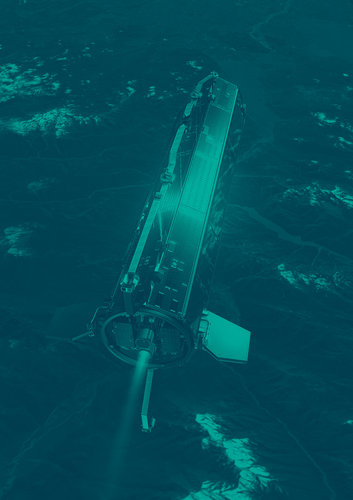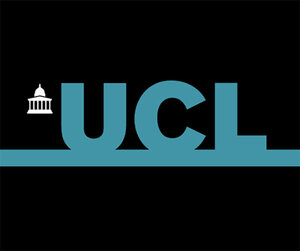CryoSat Lead Investigator: interview with Duncan Wingham
The original proposal to build a satellite that would measure ice-thickness change came from Prof. Duncan Wingham in 1998. His role as Lead Investigator for CryoSat has been to maintain the scientific integrity of ESA’s ice mission – from the drawing board through to a real satellite mission.

Duncan Wingham, a British national, is Professor of Climate Physics at University College London (UCL) where he is Head of the Department of Earth Sciences. He was the first Director of the Centre for Polar Observation and Modelling (CPOM) of the UK Natural Environment Research Council (NERC). He is also Chairman of NERC Science, Innovation and Strategy Board (SISB).
Prof. Wingham was educated at Leeds and Bath Universities, UK, where he gained his BSc and PhD in Physics. His particular expertise is in studying the flow and mass exchange of Earth’s ice sheets through the use of ultra-precise measurements from Earth observation satellites.
ESA: What is the role of the Lead Investigator?
Duncan Wingham
After having proposed the mission to begin with, my role has been to maintain the mission’s scientific integrity. When you make a proposal for such a mission you state estimated performance. My job has been to ensure that the performance requirements are met, right through from the paper design to a real satellite.
I’ve also been involved in the ground segment design, and the software elements that convert radar echoes into height information. We at UCL have developed quite a bit of that software.
In addition, I provide a link between ESA and the ice science community who will be the main users of CryoSat data, and many of whom will be helping validate the results.
ESA: Has your role been any different through the process of rebuilding CryoSat following the loss of the original satellite in 2005?
Duncan Wingham
In principle, no, but it’s true to say I have had an easier time. Much of the task focused on the design and performance of the satellite and ground segment, which did not need repeating. Of course, as we approach the launch – that is, from the scientific point of view, the start of the mission – things are getting busy again.
ESA: How did the original CryoSat mission come about?
Duncan Wingham
ESA announced the Earth Explorers competition! Meanwhile here at UCL we had just realised it was possible to measure sea-ice thickness, and by inference, ice mass from space. It was clear to us, even back in 1998, that what was happening with sea-ice mass was becoming an increasingly critical issue. So, ESA's announcement and the discovery happened almost simultaneously.
We had been demonstrating the approach was feasible using ESA's ERS class of radar altimeters, but at the same time the flaws in trying to use that technology to solve this problem were immediately clear.
ESA: What were the problems with these other satellites?
Duncan Wingham
First of all the orbits were inappropriate and just didn't cover a large part of the Arctic. Secondly, the resolution of the sensors, which were designed to measure the marine geoid – or mean sea surface – was just too poor to learn much about the ice.
We don't measure the thickness directly – we can't see through to the bottom of the ice. Instead, to measure sea ice you have to distinguish what's an echo from the ice and what's an echo from the water. Differencing these two quantities, following the principle of Archimedes, we arrive at what is called the 'freeboard'.
To do this, you have to distinguish between ice and water, and the poorer the spatial resolution the harder that is to do, so a piece of ice has to be large to determine unambiguously that it is ice. Most of the Arctic ice floes are between 500 metres and five kilometres in size. The resolution of the ERS and Envisat radar altimeters is around about 10 kilometres – in short, one can see only the very largest ice floes, which in a rough and ready way, means you are only measuring 10% of the ice. On CryoSat, which is Europe's first dedicated ice mission, the resolution will be a kilometre, so we should measure around 80% of the total ice mass.
One advantage of being 'late' is that we will be able to exploit the high resolution geoid from GOCE. This will help us in get an accurate Arctic sea level, which is the first step to obtaining sea-ice thickness.
Existing radar altimeters also have similar problems measuring the edge of ice sheets on land. The ice sheet gets steeper nearer the coast and the steeper it is, the harder it is for a poor resolution sensor to determine a clean echo. Similarly, the Antarctic Peninsula is very mountainous so there is only about 30% coverage at the moment. It is only by improving the resolution with CryoSat that we can push out into the marginal regions of the ice sheet.
ESA: Since CryoSat was originally proposed there seems to be stronger evidence of diminishing polar ice, why is there still a need for CryoSat?
Duncan Wingham
In the period between proposing CryoSat in 1999, the Arctic ice decline has become a fact, rather than a prediction. One the other hand, the ice decline is more rapid than any model prediction; clearly, we need to understand in much greater detail the behaviour of the ice. In addition, the decline in the ice opens the Arctic Ocean to the action of the winds and so surface currents may alter – increasing the possible effects on the North Atlantic. The SIRAL radar of CryoSat-2 is the perfect instrument to examine all these effects.
ESA: Where will you be for launch?
Duncan Wingham
I’ll be at ESA’s European Space Operations Centre (ESOC) in Darmstadt, Germany – anxiously waiting to hear of a successful separation.
Editor's note:
This is one in a series of interviews with a few of the key people that are involved in the CryoSat mission. Please check back as the list will be added to over the coming weeks.










